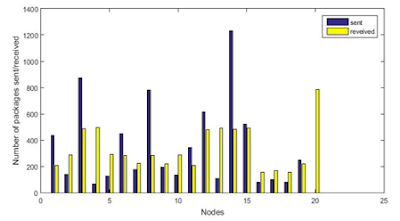There are five tasks for this week.
1.
Achieving the coding of position of sink (base
station).
2.
Comparing the performance of three protocols.
3.
Collecting the number of data packets of each
nodes.
4.
Considering the diversity of the solar energy for
each node.
5.
Working on design the poster and obtain the basic
frame of poster.
After discussing with supervisor, the diversity of solar energy had been
solved. The diversity means that for different nodes in various position, the
collection efficiency for each nodes is different. Thus, in the beginning of
the program, a random percentage is produced for total solar energy of each
sensors.
Last week, the method of determining the position of sink was achieved.
This week, the coding is compiled successfully. The main way is to find the
minimum number of connection hops. This week, the lifetime of three protocols
is compared. However, optimizing solution based on SPIN has some problems due
to the lifetime is less than time of gossiping.
For better observing the behavior of each nodes, the number of data
packets of each nodes is visualized by histogram which is shown below.
Figure 1: the number of
data packets of each node
Meanwhile, the fundamental
knowledge which is called WSN OSI LAYER for this project is introduced. There
are five layers for wireless sensor networks and each layer has specific
functions.
- Physical layer
- Application layer
- Transport layer
- Network layer
- Data link layer
The main layer is physical
layer and its function is to provide interface to transmit steam of bits. The existence
of transport layer is for deciding the protocol. The coding and operation of
whole program is based on this basic principal knowledge.
In addition, the frame of
poster is designed and the rough layout is shown below.
Figure 2: the first layout
of poster
Final week, the main object
is to debug three touting protocols and achieve final design of poster. In addition,
we will prepare for bench inspection in Week 6 and discuss some possible
questions.



